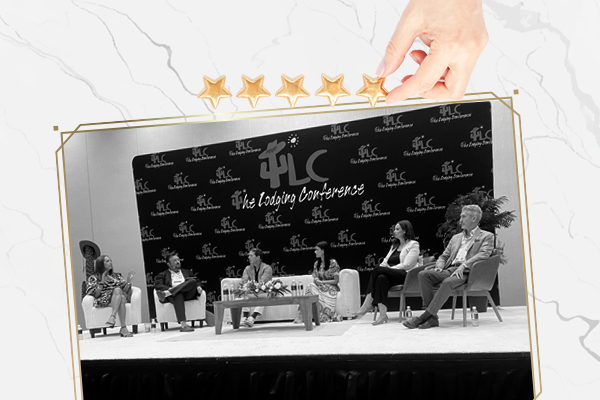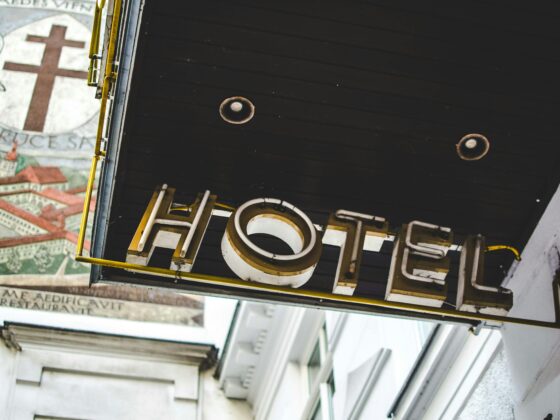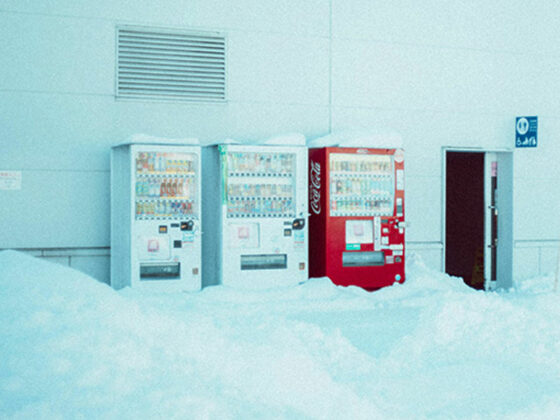The Wall Street Journal story “The Rise of the $1,000-a-Night Hotel Room” put consumers on notice: staying in the lap of luxury can cost a pretty penny.
The demand for luxury accommodations was on full display at The Lodging Conference here at the JW Marriott Phoenix Desert Ridge—and it wasn’t just the bar prices.
Vicki Poulos, head of luxury and lifestyle brands at IHG Hotels & Resort, summed it up succinctly during a panel session focused on luxury hotel demand: “Rich people continue to travel.” And the rich people are growing: According to estimates by Credit Suisse, the number of global millionaires could exceed 84 million by 2025, a rise of almost 28 million from 2020. Moreover, high-net-worth individuals are not just those fortunate enough to have inherited wealth; they are self-made—from Gen X to millennials. “It’s made luxury evolve,” Poulos said.
Ten years ago, IHG only had one luxury brand, InterContinental Hotels, a luxury blade among a lawn of mostly midscale brands, like the wildly popular Holiday Inn Express. Today, IHG has firmly planted itself in the luxury and lifestyle space with such brands as Regent and the sustainably minded Six Senses.
Luxury hotels are not a new thing, but COVID times was boom times for them, especially luxury resorts with ample space and outdoor amenities and experiences. The pent-up demand gave luxury properties “amazing pricing power,” said Erin Green, VP of development and acquisitions at Auberge Resorts Collection. “It’s let the good times roll.”

The data don’t disagree. Though room nights costing a grand a night may not be the norm everywhere, they still are spicy. According to CoStar, luxury hotel average daily rates year-to-date August 2024 were $415.64, which was more than $190 higher than upper-upscale hotels. As lofty as it sounds, it was 2.5% lower than during the same period in 2023, which points to a deceleration or further normalization of luxury hotel rates. Still, while rate enervated some, RevPAR was $2 higher at $282.18, the result of a 2-percentage-point rise in occupancy.

Luxury Has Legs
A lack of new supply across the entirety of the hotel industry and all chain scales has been a theme since the pandemic, but Green said that is turning, citing a robust luxury development pipeline. According to CoStar numbers, existing luxury hotel supply in the U.S. is 502 hotels with 36 currently under construction.
Those numbers could, in fact, swell, especially as interest rates comes down and hotel construction becomes easier for developers and more palatable for lenders. “There are owners out there with dry powder,” said Jenna Jacobson, VP of luxury and mixed-use development at Marriott International. “Luxury has proved so successful and that’s what is getting financed.” Branded residences attached to a luxury project assists further in that; in fact, few luxury developments lack a residential element. Sixteen Marriott brands have branded residences. There is even a Marriott recognition program exclusively for branded residence owners and separate of Bonvoy called Onvia.
Residences attached to a hotel brand have become so popular that IHG is doing a standalone Regent residence in Dubai. Regent Residences Dubai – Sankari Place in the Marasi Marina neighborhood will include 63 units as well as 10 floating homes. “There is insatiable demand from consumers for branded residences,” Green said.
It’s not only gateway markets where luxury development is happening, Poulos said. “Secondary markets and emerging markets are also working for luxury,” she said, citing Six Senses La Sagesse Grenada as one example.
Marriott struck gold of late in the luxury space on the conversion side, which has been another post-pandemic theme for lodging company expansion due to the relative dearth of new construction starts. Three notable recent deals include Pelican Hill in Newport Beach, Calif., which will become a St. Regis at a later date; the former Conrad Midtown in New York now The Luxury Collection Hotel Manhattan Midtown; and Turtle Bay Resort in Hawaii, now rebranded as The Ritz-Carlton O’ahu, Turtle Bay and owned by Host Hotels & Resorts.
“With rates and construction costs where they are at lower loan-to-cost [values], conversions are an attractive opportunity,” Jacobson said.
Host Hotels & Resorts, a real estate investment trust that owns hotels, has 80 total hotels and Bryan Thrush, 1st VP of development, design and construction, said luxury properties in its portfolio are the top performers. Thrush said that Host’s strategy when it comes to acquiring hotels is to look for markets that have high barriers to supply growth and newer properties that entail less CapEx spend.
REITs, Green said, used to have an aversion to building out portfolios heavy with luxury assets due to their risk profile and challenges through downturns because of their expense composition: operating luxury hotels and resorts is expensive. Now, he said, there is more institutional money investing in the space and the risk profile has changed. “[The composition] of invested capital has changed,” he said.
Running Wild
Operating luxury hotels takes a village—quite literally—where the hundreds of employees who clean the rooms, wait tables, tend bars, check guests in and out, maintain the grounds, work the retail stores and operate the spas and golf courses oftentimes live on or close to the property in living quarters provided by the hotel. It’s a lot of people and the cost to pay them continues to grow, particularly as many municipalities seek to enact laws to increase minimum wages.
Host Hotels provides workforce housing at the Four Seasons Jackson Hole in Wyoming, for example. “Labor rates and overall costs are increasing,” Thrush said.
The bright side is that higher revenue can give cover to growing costs. “Luxury has always been challenging,” Green said, noting the operating risk. “It’s gotten better in the past five years because the revenue side has gotten better.”







